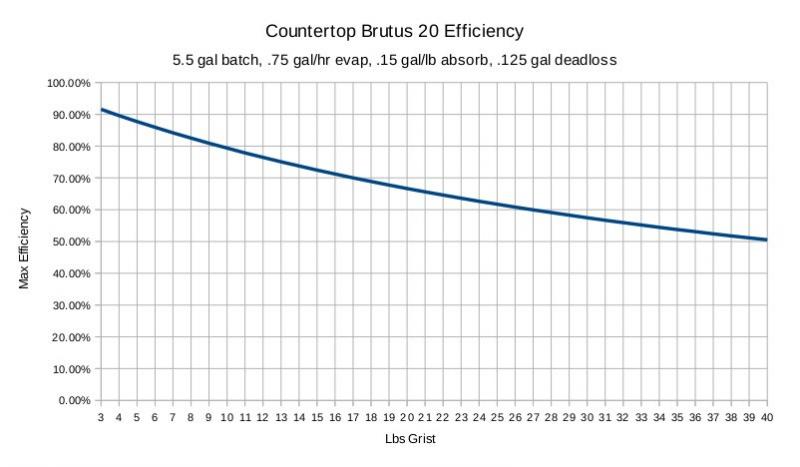bigjoe
Well-Known Member
So, with BIAB, you could do this with one pot I'm thinking. Fire up your BK to your strike temp, add the bag of grains keeping the top of the bag opened by clamping to the outside of the pot, stir, add your lid, recirculate, direct fire BK (insuring bag is not on bottom obviously), remove bag after one hour, and boil.
??
Check out the link in my signature. Its pretty much the way you describe in your post.
Ghetto Single Vessel No Sparge brew rig
I've been having efficiency problems lately. I've never had to adjust my recipes from a normal mash. I was getting 75% on most batches. Lately I've been at 65%. I've changed a few things in my process. My pH is usually dead on and I do an iodine test every mash. One thought is I've increased my batch size from 6 to 8.5 gallons. Maybe the larger batch size isn't conducive to BIAB. My grain is getting old also. Its over a year old at this point, not much left.
I did an experiment in my kitchen with a small amount of grain with the same mash parameters and got the same 65%. So maybe just old grain with a high moisture content maybe? I'm getting a few 55 lbs sacks in a week or so. So if it is my grain I should know pretty quick.









































![Craft A Brew - Safale S-04 Dry Yeast - Fermentis - English Ale Dry Yeast - For English and American Ales and Hard Apple Ciders - Ingredients for Home Brewing - Beer Making Supplies - [1 Pack]](https://m.media-amazon.com/images/I/41fVGNh6JfL._SL500_.jpg)















